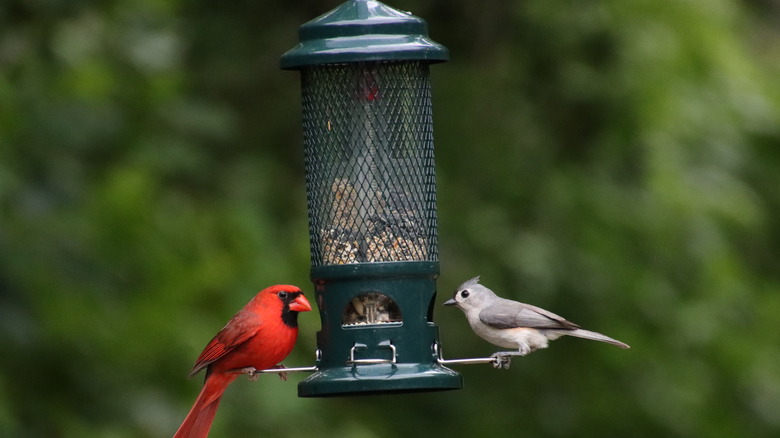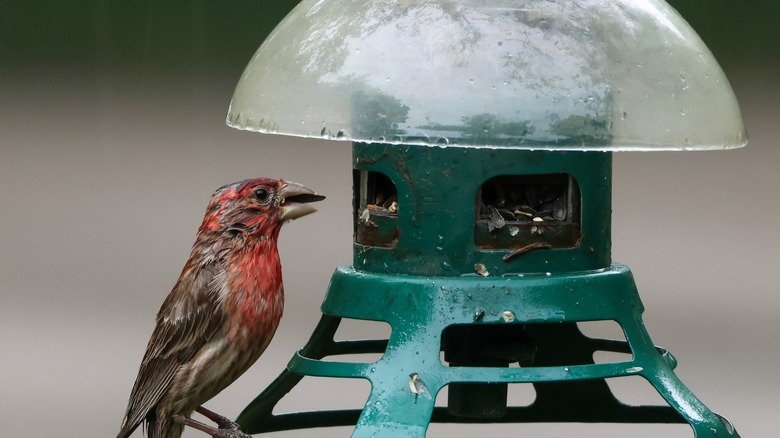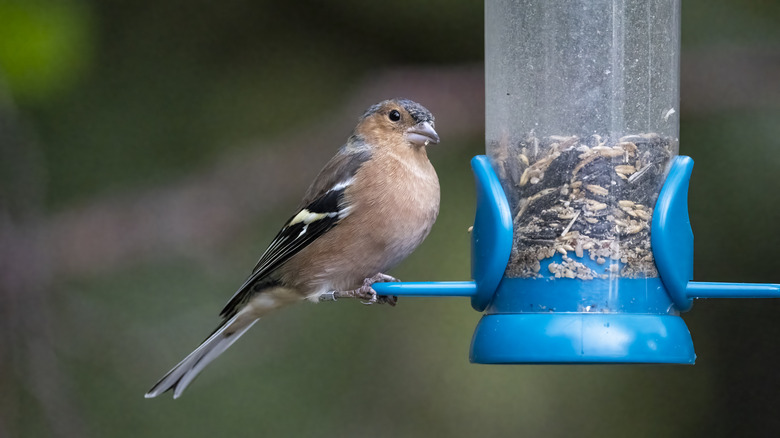The Best Ways To Keep Your Bird Feeder Safe During Storms
We may receive a commission on purchases made from links.
Both store-bought and DIY bird feeders make a wonderful addition to any outdoor space. Depending on what food you use and where in the world you live, a single feeder can attract dozens of different species and bring the entertainment of nature right to your backyard, especially if you install a bird feeder camera. Just as quickly, however, the unpredictability of weather can completely wipe out a bird feeder with a single storm or gust of wind, leaving you with an unrepairable and unusable feeder.
Fortunately, there are a few different ways that you can proactively set up your bird feeder to ensure that it withstands the tests of rain, wind, snow, and every natural obstacle in between. You can install baffle rain guards, use specific wind-resistant hooks, or proactively move your bird feeder to combat the stresses of extreme weather conditions. And, the best part about these hacks is that at least one, if not all, is suitable for protecting any given feeder.
Hacks that work
The first hack is adding a roof to your hanging bird feeder. There are many different products available that act as a rain shield for your feeder, with the most common being the interchangeable rain guards and baffles. These products are circular and have a convex curve to them, much like the design of an umbrella, such as this one from Amazon for $18.99. To use it, start by removing your feeder and placing it aside. Next, latch the baffle's top hook to the hook you typically attach to your feeder, and interlock the baffle's inner hook to that of your hanging bird feeder. This setup prevents rainwater from reaching the seeds and other nutrients in the feeder, resulting in a much lesser chance of mold.
This next hack is a much lesser-known and niche way to make your bird feeder more secure. To prevent a hanging feeder from destruction in strong winds, don't use the hook it comes with. Instead, invest in a sharply curved hook to ensure that, even if it does sway, the feeder will not fall off the hook. Home Depot's rust-resistant metal hook for $3.99 is perfect for this hack because it is sturdy enough to withstand natural elements but also thin enough to bend to create shaper curves.
One last hack and warnings
This final hack is completely free and seems rather obvious. Simply keep a close eye on the weather forecast during the months that you use your bird feeder. Knowing if and when a large storm or particularly windy day may come gives you plenty of time to take the feeder inside before any damage can be done. Once the wild weather subsides, place your feeder outside again for the birds to enjoy.
As with all hacks, there are some downsides and things to look out for when using these bird feeder savers. When it comes to using a rain guard, be careful of your feeder's surroundings. If you have it hanging from a tree branch, rain runoff from other branches or leaves nearby could bypass the umbrella and reach your feeder. And while curved hooks are great for keeping your feeder on its post, make sure to check it for rust or breakage every once in a while to ensure full effectiveness. Watching the weather is nearly fool-proof, but there is always a chance that a pop-up shower appears that the forecast missed ahead of time. If that's the case, run and grab your feeder at the first sign of rain and keep it inside until the storm passes.


